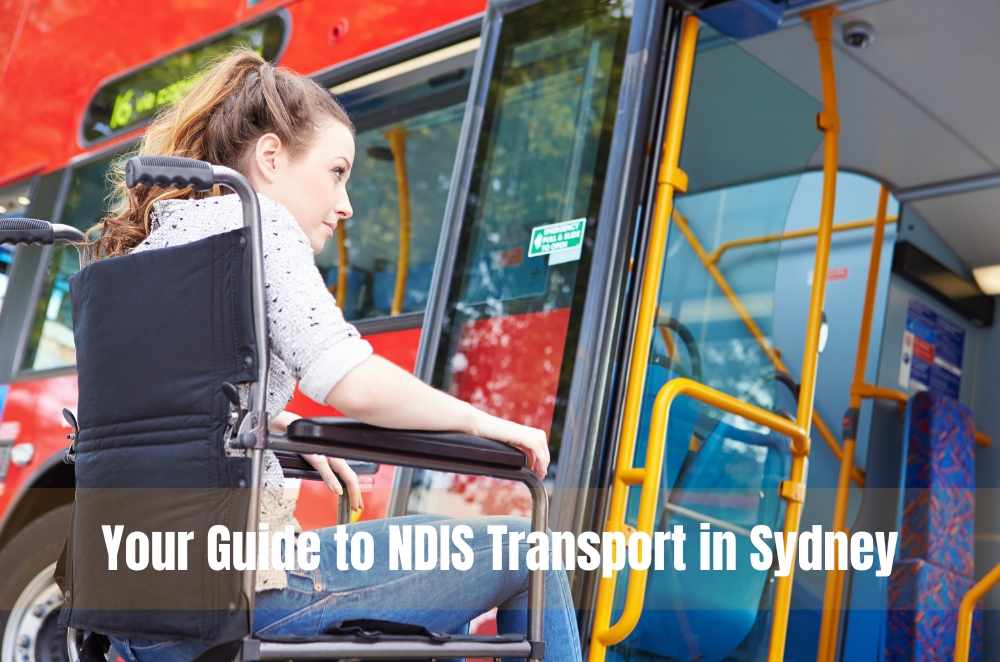
Getting around Sydney shouldn’t be a barrier to living life on your terms, but for many people with disability, transport is one of the trickiest parts of navigating independence. That’s why the NDIS includes dedicated funding for participants who need help getting from A to B. But knowing what’s covered, how to access it, and where to start can be overwhelming. If you're exploring your options for NDIS travel support, you’re not alone.
Whether you’re new to the scheme or looking to tweak your current plan, this guide breaks down how NDIS transport works in Sydney, who’s eligible, and how to make the most of your funding.
What exactly is NDIS transport support?
NDIS transport support helps eligible participants travel to education, work, community activities, or medical appointments when public transport or private options aren’t accessible or practical. It's especially useful for participants who don’t have access to a car, can’t drive themselves, or require additional support during travel.
Reimbursements for travel costs (like taxis, ride shares, or community transport)
Support workers transporting or accompanying you
Specialised transport services offered by NDIS-registered providers
Many participants in Sydney choose a blended approach — using family or support workers for some trips, and independent providers for others.
Who qualifies for transport funding?
Transport isn’t automatically included in every plan — it’s based on your individual needs and circumstances. According to official guidelines on NDIS transport funding, you may be eligible if:
You can’t use public transport due to your disability
You need regular transport to access daily activities
You don’t have informal supports (like family or carers) who can help
You require a vehicle that’s modified or specialist assistance during travel
Importantly, NDIS won’t typically fund general public transport fares unless there’s a specific reason you can't access services. So if buses or trains aren't an option for you due to mobility or sensory reasons, that's when NDIS support kicks in.
How transport funding is budgeted
Transport funding appears under the “Core Supports” category in your NDIS plan, specifically in the ‘Transport’ line item. Depending on your needs, you’ll be placed into one of three funding tiers:
Level 1: Up to $1,606 per year (for people studying part-time or attending occasional programs)
Level 2: Up to $2,472 per year (for regular work or day programs)
Level 3: Up to $3,456 per year (for full-time work or intensive community participation)
This is paid directly to your nominated bank account, allowing flexibility in how you spend it, as long as it aligns with your goals and approved supports.
Choosing a transport provider in Sydney
Sydney’s a big place. From the Northern Beaches to Campbelltown, the right provider should understand your area, know your routine, and offer the right vehicle and support setup. A quality provider will:
Be NDIS-registered and transparent about pricing
Offer qualified, trained support workers or drivers
Have vehicles that suit mobility needs
Allow you to schedule regular and one-off trips easily
Understand the NDIS invoicing process (if plan-managed or agency-managed)
One of the simplest ways to start is by chatting with a local provider that specialises in NDIS travel support — many will walk you through how to include transport in your next plan review or how to switch from your current service.
What a typical day of NDIS travel can look like
Let’s say you’re based in western Sydney and need to get to a TAFE course three days a week, plus do your grocery run and attend a monthly hydrotherapy session. Here's how it might work:
A support worker picks you up in a wheelchair-accessible vehicle
They help you into the car and stay with you during your TAFE day
After TAFE, they assist with errands or appointments
The trips are recorded and submitted for reimbursement or billed directly to your plan
Over time, some participants move toward more independent options, like travel training or community bus use — that’s where NDIS plan flexibility comes into play. Plans aren’t set in stone, and can evolve with your confidence and needs.
What’s not covered under NDIS transport
It’s also important to understand the limits of what NDIS can fund. Some travel-related costs are considered “everyday expenses” and generally not covered, such as:
Tolls, petrol, or registration for your private car
General public transport fares (unless specified in your plan)
Parking fees
Travel for family members or carers (unless they’re providing transport)
Tips for making the most of your transport support
Keep receipts and a travel log — especially if self-managed
Review your transport use before plan reviews to increase funding if needed
Ask your provider about trip bundling (multiple errands in one trip)
Start small and build confidence — short familiar routes first
Explore shared or group transport if suitable and cost-effective
Real-life story: Finding confidence through transport
When Sarah*, a young woman with autism based in Inner West Sydney, first got NDIS funding, she avoided travel altogether. Her anxiety around unfamiliar places meant she rarely left her suburb. But with the help of a consistent driver through a registered provider, she slowly built up her comfort level, from short drives to the community centre to eventually attending art classes in the city. By the end of her first year on the plan, she was catching Ubers to the museum on her own.
Having the right accessible transport solutions helped unlock so much more than just movement — it gave her freedom, confidence, and connection.
Wrapping up
Transport should never be a barrier to living your best life. With the right support and a bit of planning, Sydney’s size and sprawl don’t have to get in the way. If you think you might benefit from NDIS travel support, now’s the time to ask questions, check your eligibility, and start building travel into your plan.
Because every journey — whether it’s to work, a mate’s house, or just down to the shops — is part of your independence.



Write a comment ...